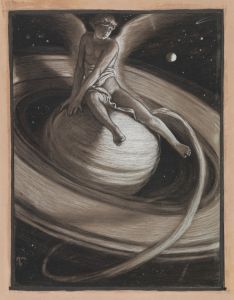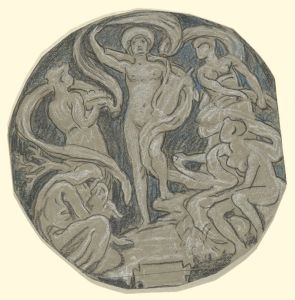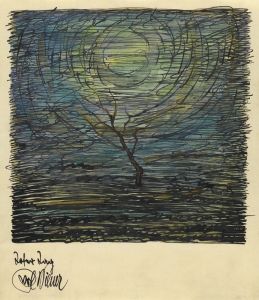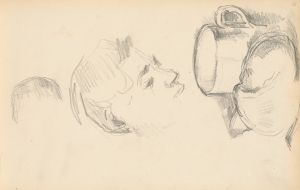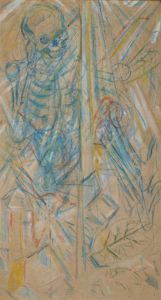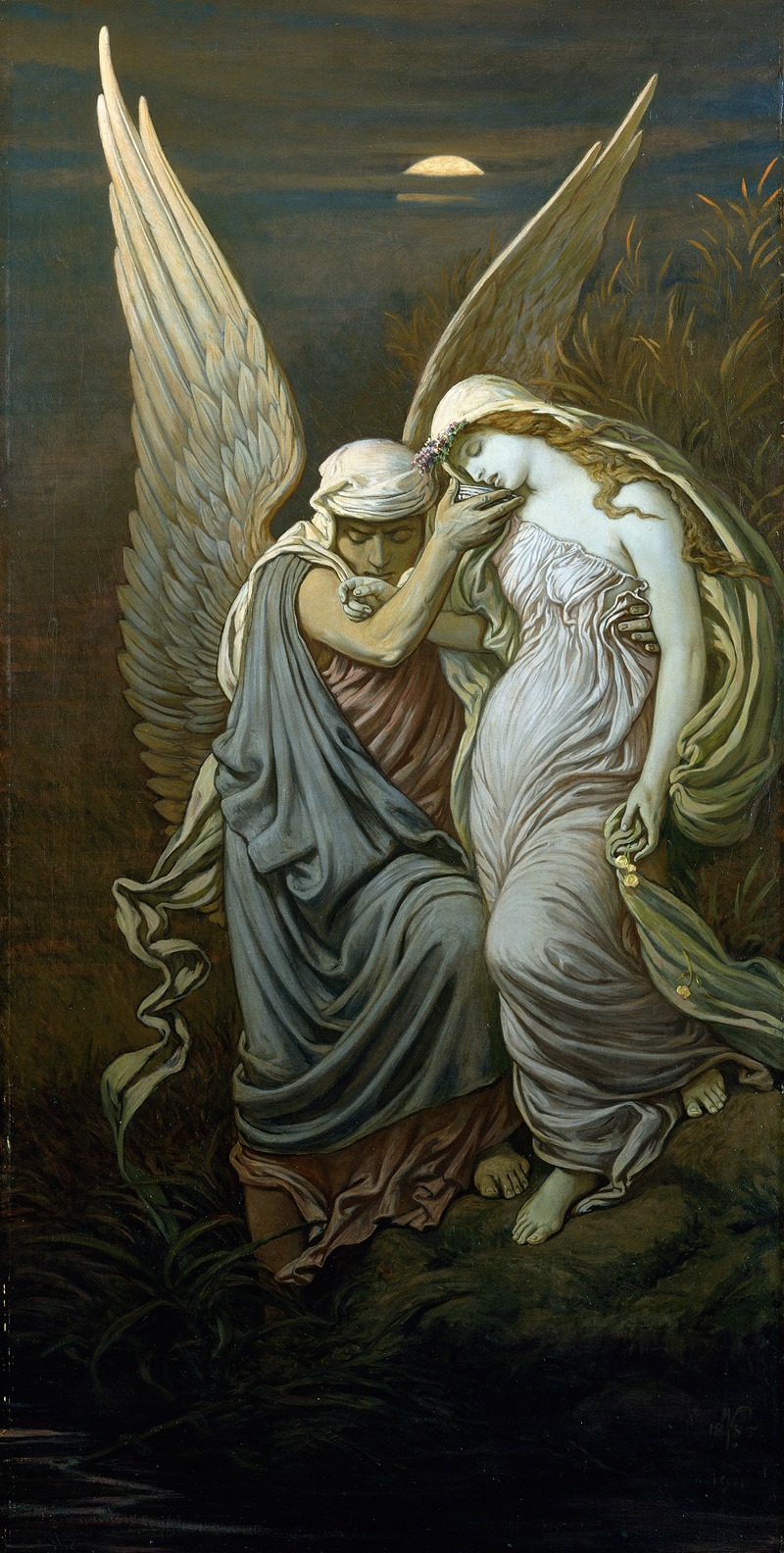
The Cup of Death
A hand-painted replica of Elihu Vedder’s masterpiece The Cup of Death, meticulously crafted by professional artists to capture the true essence of the original. Each piece is created with museum-quality canvas and rare mineral pigments, carefully painted by experienced artists with delicate brushstrokes and rich, layered colors to perfectly recreate the texture of the original artwork. Unlike machine-printed reproductions, this hand-painted version brings the painting to life, infused with the artist’s emotions and skill in every stroke. Whether for personal collection or home decoration, it instantly elevates the artistic atmosphere of any space.
Elihu Vedder's "The Cup of Death" is a notable work of art created by the American symbolist painter Elihu Vedder. Born in 1836, Vedder was an influential figure in the symbolist movement, which sought to express ideas and emotions through symbolic imagery. "The Cup of Death" is one of his significant contributions to this genre, reflecting his fascination with themes of mortality and the human condition.
Painted in 1885, "The Cup of Death" is an oil on canvas that exemplifies Vedder's interest in allegorical and mystical subjects. The painting depicts a somber scene centered around a large, ominous cup, which serves as the focal point of the composition. The cup is often interpreted as a symbol of mortality, representing the inevitable fate that awaits all living beings. Vedder's use of dark, muted colors and dramatic lighting enhances the painting's eerie and contemplative atmosphere.
The composition of "The Cup of Death" is carefully constructed to draw the viewer's attention to the central theme. Surrounding the cup are figures that appear to be in various states of despair or contemplation, suggesting the universal impact of death on humanity. Vedder's skillful use of symbolism invites viewers to reflect on their own mortality and the transient nature of life.
Elihu Vedder was deeply influenced by his travels and studies in Europe, particularly his time in Italy, where he was exposed to classical art and literature. These influences are evident in "The Cup of Death," which combines elements of classical allegory with a modern, symbolist sensibility. Vedder's work often explored philosophical and existential themes, and this painting is no exception.
"The Cup of Death" is part of Vedder's broader body of work that includes illustrations, paintings, and writings. He is perhaps best known for his illustrations of Edward FitzGerald's translation of "The Rubaiyat of Omar Khayyam," which also explores themes of life, death, and the passage of time. Vedder's ability to convey complex ideas through visual art has earned him a lasting place in the history of American art.
Today, "The Cup of Death" is recognized as an important example of 19th-century American symbolism. It reflects the broader cultural and artistic movements of the time, which were characterized by a fascination with the mystical and the metaphysical. Vedder's work continues to be studied and appreciated for its depth, complexity, and emotional resonance.
Elihu Vedder's legacy as a symbolist painter is cemented by works like "The Cup of Death," which continue to captivate audiences with their rich symbolism and thought-provoking themes. His contributions to the art world have influenced generations of artists and remain a testament to his skill and vision.






